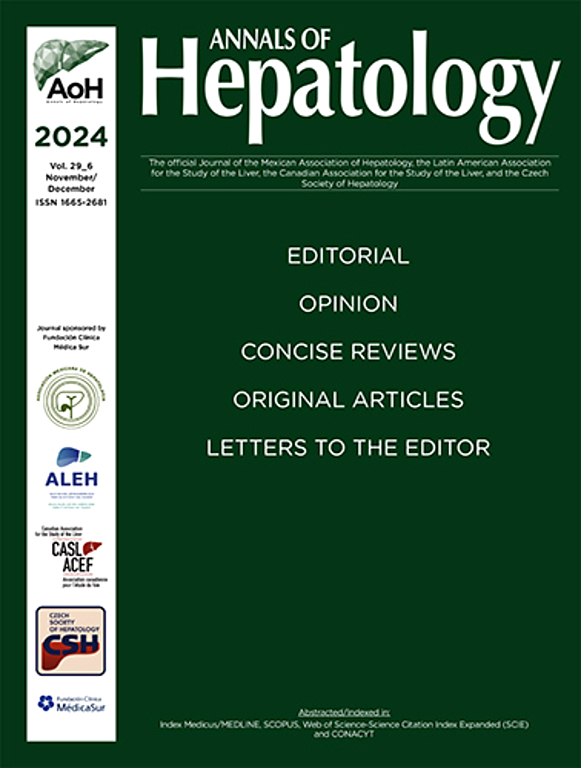P-24 DESCRIPTION OF SERUM MICRORNAS EXPRESSION AMONG INDIVIDUALS WITH VIRAL HEPATITIS AND LONG COVID
IF 3.7
3区 医学
Q2 GASTROENTEROLOGY & HEPATOLOGY
引用次数: 0
Abstract
Conflict of interest
No
Introduction and Objectives
Long COVID syndrome affects millions of people and is characterized by the permanence of signs and symptoms after 90 days of SARS-CoV-2 infection. MicroRNAs (miRNAs) are small non-coding RNAs that are related to different conditions and can characterize profiles including liver disease. OBJECTIVES: Characterize the serum expression of miRNAs in relation to viral hepatitis B and C and Long COVID.
Patients / Materials and Methods
Serums were obtained from 69 individuals from 4 groups: (i) only Long COVID (n=18); (ii) Viral Hepatitis/Long COVID (n=21); (iii) only Viral Hepatitis (n=10) and (iv) control individuals (n=20). MiRNAs were isolated using a commercial extraction kit and miR-122, miR-143 and miR-223 were evaluated using quantitative real-time PCR. The expression of the examined genes was calculated from the formula RQ = 2-ΔΔCT. Statistical analysis was carried out using GraphPad Prism 9.5.1 software.
Results and Discussion
The upregulation of the miRNAs analyzed was observed in the groups with diseases compared to the control, all with statistical significance (p<0.05). Of the groups with diseases, the Viral Hepatitis/Long COVID group showed the highest expression of all three miRNAs analyzed. For miR-122, the Viral Hepatitis/Long COVID and only Viral Hepatitis groups were up-regulated with mean RQ of 100.38 ± 122.06 and 80.72 ± 173.16, respectively, compared to the control 3.20 ± 8.75 (p<0.05). For miR-143 and mir-223, the highest expression was in the Hepatitis/Long COVID (mean RQ: 316.36 ± 572.96 and 270.45 ± 558.55, respectively) followed by the only Long COVID group (mean RQ: 158.12 ± 262.42 and 115.65 ± 191.30, respectively), both with statistical significance when compared to the control (mean RQ: 4.12 ± 5.37 and 3.78 ± 8.5, respectively).
Conclusions
The presence of disease affects the expression of these miRNAs when compared to healthy individuals. The description of these targets will contribute to the understanding of Long COVID and its association with other diseases.
求助全文
约1分钟内获得全文
求助全文
来源期刊

Annals of hepatology
医学-胃肠肝病学
CiteScore
7.90
自引率
2.60%
发文量
183
审稿时长
4-8 weeks
期刊介绍:
Annals of Hepatology publishes original research on the biology and diseases of the liver in both humans and experimental models. Contributions may be submitted as regular articles. The journal also publishes concise reviews of both basic and clinical topics.
 求助内容:
求助内容: 应助结果提醒方式:
应助结果提醒方式:


